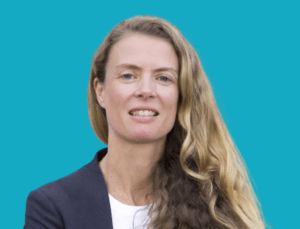With the world facing a climate emergency, does having a traditional financial plan still make sense? Here, Steven Day, Independent Financial Adviser at Good Egg firm Switchfoot Wealth, gives his top tips for building a ‘sustainable financial plan’. This is one that considers both the risks to your finances of the climate crisis, and how the money decisions you make now can help contribute towards (and benefit from) a more sustainable future.
It’s always a good time to take stock of your finances.
Even if you already have a financial plan, it’s important to ask yourself: is it sustainable? In other words, does it take into account climate science? If not, it isn’t aligned with a sustainable and survivable future.
What is a traditional financial plan?
A financial plan is a model of your possible financial future. The purpose of it is to help you understand the likely consequences of choices that are available to you today.
Building a good financial plan starts with collecting information on your income and outgoings, as well as any assets (e.g. your pension) and/or debts (e.g. your mortgage).
A range of assumptions are then used to project into the future in areas such as;
- Economic growth
- Inflation
- Expected returns from cash and investments
- Foreseeable or likely changes in circumstances
- Future taxes
- Life expectancy
The golden rule with these assumptions is not that they are correct (because, of course, no one can accurately predict the future) but that they are “reasoned and reasonable”.
For the most part this has been an effective methodology. But as the world veers ever closer to a level of heating that exposes us to extreme danger, now is the time to revisit these and ask the critical question: are they still reasonable?
Switchfoot Wealth awarded Good Egg mark
What is a sustainable financial plan?
Sustainable financial planning is just like traditional financial planning, except that in addition the following principles are applied:
- The assumptions used about the future are reasonable in the face of the climate emergency. In other words, it’s listening to the science.
- It considers the physical risks that might affect you, your family, your business or your assets and investments. What different risks will apply at different stages in your life and what are the costs or opportunities created by dealing with these risks.
- The transition and zeitgeist risks that could affect your business, your assets, or your investment portfolios are explored and addressed through defined actions.
This results in a solution orientated financial plan. It allows you to make smart investment and lifestyle decisions, avoiding the worst risks and maximising the potential of your financial future. Any resulting investments will align with a survivable future*.
Our tips
- Establish your own personal financial plan – having this in place allows you to be clear on what you want your money to help you achieve and by when.
- Check whether this is sustainable – you may already have a financial plan in place or you might be building one from scratch. In either case, it is important to check the assumptions upon which it is based. Does this assume that the future will be like the past? If so, then this doesn’t reflect the science and could be leading to an unsurvivable future (in which case, a financial plan won’t make much difference!)
- Consider what physical and transition climate risks you may face – for example, is your home at risk from sea level rises? What could that mean to its value or the cost of insuring it in the future?
- Review your options to mitigate these risks – for example, might you have to adapt your home to mitigate the risks that you’ve identified or indeed move entirely? How does the cost of this factor into your financial plan?
- Ensure your investments match – planning for a survivable future means expecting that the Global Economy will transition to one which allows for this. This transition also applies to companies who therefore need to have credible, science-based plans to do so. The result will be the elimination/decline of some sectors/companies and the growth of others. Do your investments reflect this?
Having a sustainable financial plan in place brings understanding, empowerment, and solutions together to ensure that you are doing good with your money.
Find out more about Switchfoot Wealth, and book a free initial consultation, here.
Investments carry risk. The value of your investment (and any income from them) can go down as well as up and you may not get back the full amount you invested.
*by “investments aligned to a survivable future” we mean those which incorporate credible, science-based targets to reduce greenhouse gas emissions such as SBTI.




